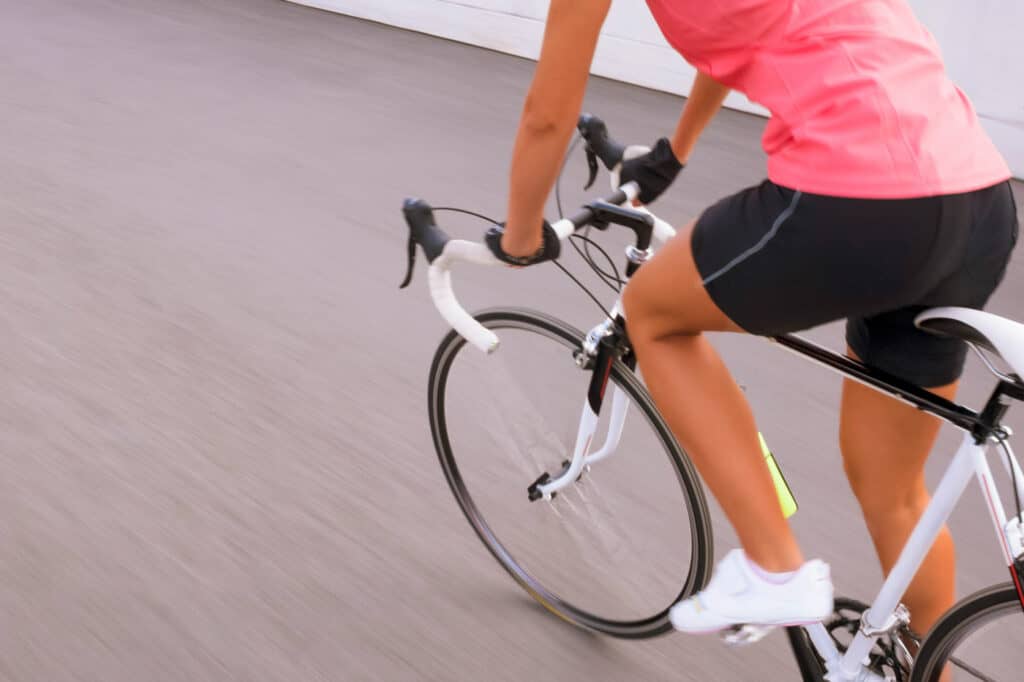Cycling is not just about hopping on a bike and pedaling away. To truly enjoy your ride and maximize your performance, it’s important to master various cycling techniques. In this article, we will explore the essential techniques that every cyclist should know. From efficient pedaling to cornering and descending, these techniques will help you become a more skilled and confident rider.
Pedaling Techniques
Efficient pedaling
Efficient pedaling is crucial for maintaining a smooth and powerful stroke. To achieve this, focus on maintaining a consistent cadence (the number of pedal revolutions per minute) and applying force evenly throughout the entire pedal stroke.
Avoid stomping on the pedals or relying solely on your quads. Instead, engage your glutes, hamstrings, and calves to distribute the workload and generate more power.
Spin vs. mash
When it comes to pedaling, there are two main techniques: spinning and mashing. Spinning refers to maintaining a high cadence with a lower gear, while mashing involves pushing a harder gear at a slower cadence.
Both techniques have their benefits, but spinning is generally more efficient and less taxing on your muscles and joints. Experiment with both techniques to find what works best for you.
Braking Techniques
Using both brakes
When it comes to braking, it’s important to use both your front and rear brakes simultaneously. This helps distribute the braking force evenly and prevents your bike from skidding or fishtailing.
Remember to apply gradual pressure rather than squeezing the brakes abruptly, especially in wet or slippery conditions.
Feathering the brakes
Feathering the brakes refers to lightly applying and releasing the brakes to control your speed while descending or navigating tight corners.
This technique allows you to maintain better control over your bike and adjust your speed without abruptly slowing down. Practice feathering the brakes to become more comfortable and confident in various riding situations.
Cornering Techniques
Body position
Proper body position is crucial for maintaining stability and control while cornering. As you approach a corner, shift your weight slightly towards the inside of the turn and lean your bike into the corner. Keep your outside pedal down and your inside knee slightly bent. This position helps you maintain traction and stability throughout the turn.
Countersteering
Countersteering is a technique used to initiate turns at higher speeds. To countersteer, gently push the handlebars in the opposite direction of the turn before leaning into it. This action helps shift your bike’s weight and allows you to navigate corners more smoothly and efficiently. Practice countersteering in a safe environment to improve your cornering skills.
Descending Techniques
Braking before the turn
When descending, it’s important to brake before entering a turn rather than during the turn. This allows you to maintain better control and stability throughout the corner. Slow down to an appropriate speed before the turn, release the brakes as you enter the corner, and focus on maintaining a smooth line.
Choosing the right line
Choosing the right line is crucial for a safe and efficient descent. Look ahead and anticipate the best path through the descent, avoiding any obstacles or hazards. Stay on the smoothest part of the road or trail, and take wider lines for faster corners. Practice descending on different terrains to improve your line selection skills.
Climbing Techniques
Seated climbing
Seated climbing is the most common technique used when tackling climbs. To climb efficiently, maintain a steady cadence and focus on keeping your upper body relaxed. Shift into an appropriate gear that allows you to maintain a consistent rhythm without straining your muscles. Use your core and upper body to stabilize yourself and distribute the effort evenly.
Standing climbing
Standing climbing is a technique used for steeper or more challenging climbs. When standing, shift your weight slightly forward, engage your core, and use your body weight to generate power. Alternate between standing and sitting to give different muscle groups a break and maintain a steady pace.
Shifting Techniques
Anticipating gear changes
Anticipating gear changes is essential for maintaining a smooth and efficient ride. Pay attention to the terrain ahead and shift into an appropriate gear before you need it. This prevents sudden shifts and allows you to maintain a consistent cadence and power output.
Smooth shifting
When shifting gears, aim for smooth and seamless transitions. Avoid cross-chaining (using extreme gear combinations) as it can cause excessive wear on your drivetrain. Practice shifting under different conditions to develop a feel for your bike’s gears and optimize your shifting technique.
Handling Techniques
Bike control
Having good bike control is essential for navigating obstacles, maintaining balance, and staying safe on the road or trail. Practice riding in a straight line, maneuvering around obstacles, and performing quick turns to improve your bike handling skills. Keep your hands relaxed on the handlebars and maintain a stable and balanced position.
Obstacle avoidance
Encountering obstacles is inevitable while cycling. To avoid accidents or damage to your bike, learn how to effectively navigate around them. Approach obstacles with a relaxed grip on the handlebars, shift your weight slightly back, and lift your front wheel slightly to clear the obstacle. Practice maneuvering around different types of obstacles to become more confident in your ability to avoid them.
Conclusion
Mastering these essential cycling techniques will not only enhance your riding experience but also improve your performance and safety on the bike. Remember to practice these techniques in a controlled environment before applying them on the road or trail.
With time and dedication, you’ll become a more skilled and confident cyclist. So, hop on your bike, apply these techniques, and enjoy the ride!
Originally posted 2023-07-31 10:30:26.


